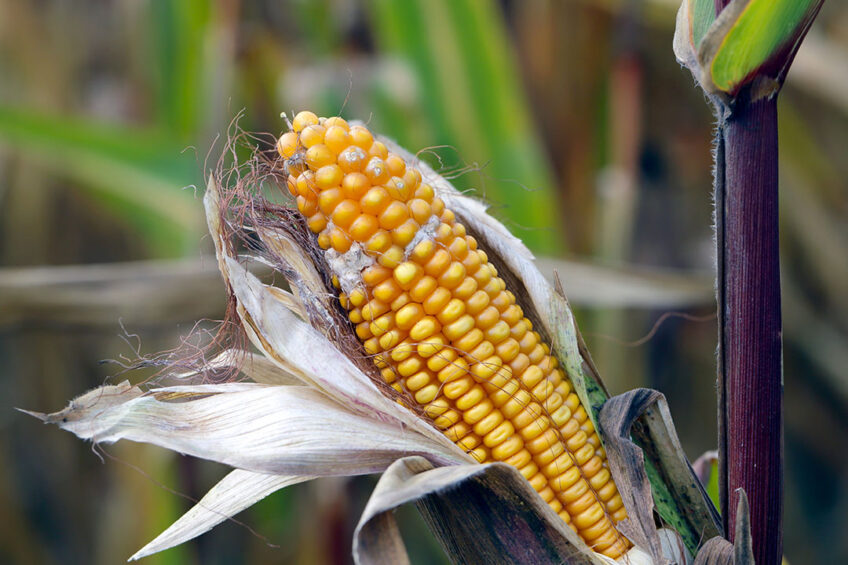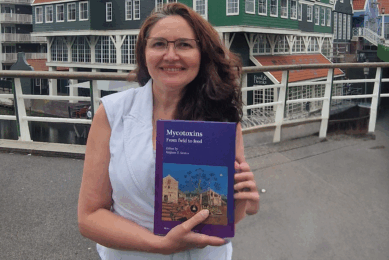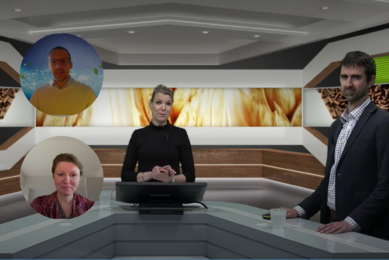Analytical challenges of modified and multi-mycotoxin contamination

The analytical problems in detecting the type and content of modified and multi-mycotoxins are not often discussed in media, yet they are common in laboratory practice and have a strong influence on mycotoxin management strategies. In this recent study, researchers shed more light on the approach and understanding of the challenges.
Mycotoxins are a huge global feed and food safety concern, especially considering recent estimates that they contaminate 60 – 80% of the food produced worldwide and that they consist of hundreds of identified species.
Mycotoxins of greatest concern
Among them, aflatoxins (AFs), ochratoxin A (OTA), fumonisins (FUMs), deoxynivalenol (DON), patulin (PAT), nivalenol (NIV), the T-2 toxin (T-2), the HT-2 toxin (HT-2), and zearalenone (ZEA) are of greatest concern. As they have damaging effects on animal and human health, many countries have set individual limits for various foods intended for human and animal consumption. To this end, various preventive measures and control strategies as well as treatments are employed but absolute elimination is impossible; despite modern techniques and growing knowledge on the subject, there are still some obstacles.
2 common stumbling blocks
In this study, which was published in Toxins (2023), researchers reveal the 2 most common stumbling blocks and reasons for the inconsistency between analytical data and practical events:
- multi-toxin contamination and
- the presence of modified (or so-called masked) mycotoxins.
Multi-toxin contamination
Reports show that current legislation refers to the assessment of risks posed by individual mycotoxins and, initially, by the metabolites of mycotoxins together with the parent compound. However, they do not consider the multiple dynamics and potential interactions between co-occurring groups of mycotoxins. In the current study, researchers highlight the fact that animal feed is vulnerable to contamination by multiple mycotoxins as it is a mixture of several raw ingredients, while the transfer of mycotoxins from animal feed to food of animal origin is often demonstrated. They stated that the co-occurrence of mycotoxins with possible synergistic or additive effects depicts a further aspect to be considered in risk assessment and requires an appropriate evaluation methodology.
Emerging mycotoxins
They also stated that there is an increasingly topical issue: the so-called “emerging mycotoxins.” This group consists of currently non-regulated mycotoxins produced by Fusarium spp., which include beauvericin (BEA), enniatins (ENNs), and fusaproliferin (FUS). Reports show that permitted levels have not been set for these mycotoxins as there is not enough data on their toxicity, occurrence and contamination levels, yet their co-occurrence with other Fusarium mycotoxins such as DON and NIV is reported.
“Regular monitoring of different mycotoxins and the collection of data on their presence and co-occurrence, with details of the location of the crops as well as the availability of this information should be a priority,” they said.
They also encouraged the building of predictive models to estimate mycotoxin risk levels by adding knowledge about weather forecasting and plant phenology. “This would be highly beneficial for different stakeholders such as farmers, the feed and food industry, processors and food safety authorities.”
Multi-toxin detection challenges
A fundamental problem in detecting multi-toxins is the question as to which toxins should be the focal point of the tests; the prime movers for routine mycotoxin testing are applicable regulatory obligations or trade specifications, i.e., what is unfavourable is the lack of globally harmonised regulations. On the other hand, apparent climate change is also contributing by causing variations in fungal populations and thus in mycotoxin patterns. In addition, new toxins are emerging, and metabolites of familiar toxins (masked or modified forms) are increasingly being found. Some of the challenges of multiple mycotoxin detection, which are independent of the analytical technique, are the need for co-extraction of multiple analytes with very different polarities and the potential for carry-over of matrix components that can affect the results.
According to the researchers, while many technologies have been developed to detect molecular interactions, each has an intrinsic technological drawback that makes it challenging to use.
“So, there is no ‘perfect’ immunoassay solution for multiplex detection of mycotoxins, but methods are improving, and there is good reason to believe that these challenges can be overcome with the development of convenient methods. In addition, greater efficiency in hazard detection and lower monitoring expenses have the potential to enable more comprehensive surveillance, further lowering the potential for mycotoxin exposure,” they said.
Detection of modified mycotoxins
The label for modified mycotoxins refers to masked and bound mycotoxins and mycotoxin metabolites. Modified mycotoxins can be described as metabolites of the parent mycotoxins made in the plant, by plant enzymes because of their defensive reaction to mould infestation, or they can be synthesised by the moulds themselves. They can also have an abiotic origin due to a chemical reaction between the parent toxin and the matrix that occurs during processing. According to the researchers, among the group of masked mycotoxins that occur in feed, ZEA-14-sulfate and DON-3-glucoside are the most common. Consuming contaminated feed and food can result in exposure to both the parental compound and the modified form.
Depending on the analytical method, the mycotoxin content of modified mycotoxins in the samples containing these compounds usually leads to their underestimation. For example, bound mycotoxins are not directly accessible and must be released from the matrix by chemical or enzymatic treatment before chemical analysis. On the other hand, modifications of mycotoxin molecules could result in an overestimation of mycotoxin levels; this is often the case when the analytical method detects the mycotoxin derivative together with the parent molecule but does not provide information regarding the analytical signal originating from a less toxic or non-toxic form.
Future analytical prospects
According to the researchers, the future development of analytical methods is based on effectively overcoming critical issues and continuously improving the performance of the methods and techniques to obtain high accuracy and sensitivity. In addition, the following remarks were made:
- Understanding the modification mechanisms of mycotoxins would help determine the maximum tolerable levels of these metabolites, which is the desired solution.
- General mycotoxin regulations focusing on major toxins are currently based on the toxicity of individual mycotoxins; consideration should be given to the potential additive or synergistic toxicity of combined mycotoxins.
- Additional efforts should be made to assess the occurrence of modified mycotoxins and their toxicity.
- Stronger efforts are required to develop predictive models that encompass contamination from a wider spectrum of mycotoxins, especially taking climate change into account.
- The regular and extensive monitoring of feed and food, the periodic revision of regulatory limits by new knowledge and practical needs as well as continuous work on developing methods to mitigate mycotoxin contamination is essential.
Based on an original article by Ksenija Nešic, Kristina Habschied and Krešimir Mastanjevic. 2023. Modified mycotoxins and multitoxin contamination of food and feed as major analytical challenges. Toxins, 15: 511.











